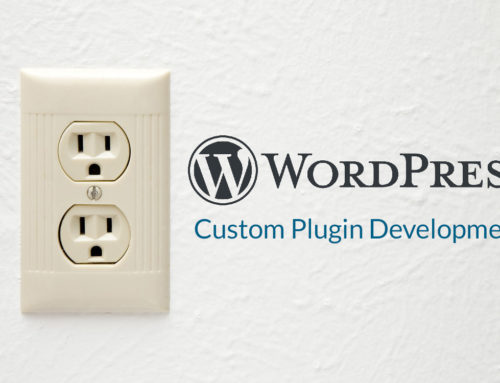Many small businesses (and their customers) would benefit from evolving their website from a one-way informative/brochure presence to a more robust, interactive customer service engine. The idea of a customer portal feature on a site is appealing – but the thought of implementing one can also feel daunting.
Businesses on the road to building an effective customer portal on their website are prone to 2 major potential wrong turns: either (a) choosing an off-the-shelf solution that is costly, hard to use, and too generic to meet their needs, or (b) opting for an extremely expensive completely custom solution.
But we know a better way: semi-custom CMS-driven customer portals built on a foundation of our hero, WordPress. Are you thinking WordPress is just a blogging tool for people with too much time on their hands? Or a nice little website builder that can’t do any heavy lifting?
Think again. We have used WordPress as the backbone of powerful custom portals, saving clients migraines and thousands of dollars in the process.
Below are a few of the tools in our portal-building toolbox: free or inexpensive WordPress & jQuery plugins that we’ve used and customized to provide serious firepower and functionality at a lower cost than a completely custom solution or third party square-peg-in-a-round-hole setup.
Step 1: Define the Requirements
It’s obviously crucial to know exactly what the portal needs to accomplish. With a meticulous & detailed approach, we Consult with the client to identify the specific functions that the portal must perform – whether online bill pay, customer service interaction, documentation downloads, etc. We document the must-haves as well as the desired bells & whistles, with as much detail as possible, resulting in a comprehensive functional specifications document.
We usually perform this process as a first project phase, then provide our estimates for implementing the requirements as a second phase.
Step 2: Start With These Crucial Plugins
-
- User Access Manager
This plugin gives you fast ability to have fine-tuned control over users’ ability to access files, pages & posts based on their role or user type. When we’ve cracked open the hood and closely integrated this plugin with the following one, we’ve worked some serious magic. - WP Filebase
We swear by this plugin for any & all file sharing requirements. It allows the administrator to upload and categorize virtually any type of file, and provides numerous different methods to display individual files and file lists. While it takes a serious web developer to truly capitalize on its greatness, even if used for some basics, it’s invaluable. - jQuery DataTables
When it comes to displaying data lists in an organized, user-friendly, powerful interactive interface, this free jQuery plugin is amazing. Keyword filtering, column sorting, and pagination are all built in and are available in its most basic implementation, which can be used to great affect. And if you have the know-how, DataTables can be highly customized and configured to allow everything from advanced filtering to inline data editing and data exporting. - Google Charts
Need to creatively and visually display actual real-time data such as statistics, charts and graphs? Google’s phenomenal charts plugin is a God-send. It takes a professional web developer to configure the data and set up powerful abilities to filter, export, or customize the appearance or interaction… but the results are astonishing and make for phenomenal dashboard views of statistics. - User Domain Whitelist/Blacklist
Whether your portal needs to keep out known bad guys, you want to prevent access from freebie email accounts like Yahoo or Gmail, or conversely you want to restrict access to users with specific domains (such as your own employees), most portals benefit for the ability to prevent access from riff-raff. This simple plugin makes managing that access fast & easy. - WCK Custom Post Type Creator
This great plugin does wonders to speed up our creation of the various post types & taxonomies needed for a portal to support sophisticated inter-related content. Taxonomies serve as the WordPress version of a relational database table and make the job of a portal’s content manager(s) far less daunting.
- User Access Manager
These are just a few of the great tools in the toolbox, and the possibilities are limitless. It’s all about choosing tools and functions that will work together to fulfill a company’s requirements, without requiring us to develop everything from scratch.
Step 3: Customize Plugins & Develop Code as Needed to Achieve the Requirements
Here’s where we separate the men from the boys. Anyone with FTP information and the ability to read can install WordPress plugins. The real job is integrating them so that they work properly together, configuring them properly, and customizing their code as needed so that the end result meets the customer portal’s functional requirements as defined in the consulting process. We’ve had the pleasure of delving deeply into the plugins described above and have continually been impressed anew at just how powerful WordPress can be when in the right people’s hands.
WordPress-Powered Custom Customer Portals
From only $500/yr*
Is it time for you to move your site to become a true full-power marketing and collaboration vehicle? Ascent can install & configure a WordPress-driven online customer portal for your SMB for less than you’d ever imagine.
Contact us for more details and to discuss your unique needs!
[rpt name=”web-portal-pricing”]
*Customizations not included in unit price. Any customizations will be quoted separately.
First year pricing includes setup & installation, therefore the first year fee is non-refundable. Cancel at any time to avoid future charges.
About the author : Lance Miller
Join our mailing list today
Insider offers & flash sales in your inbox every week.
[fusion_form form_post_id="2830" hide_on_mobile="small-visibility,medium-visibility,large-visibility" class="" id="" /]
Curabitur non nulla sit amet nisl tempus convallis quis ac lectus dolor sit amet, consectetur adipiscing elit sed porttitor lectus.



